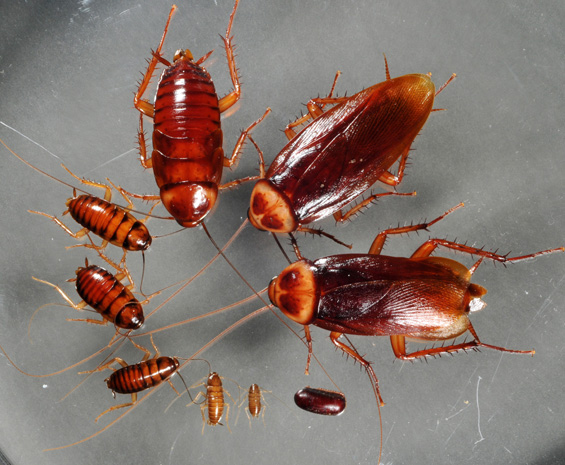
Common Name: American cockroach
Scientific Name: Dictyoptera: Periplaneta americana
Status: A common pest in homes and buildings
Damaging Stage: nymph and adult
Biology: The American cockroach is a distinctive insect with an elliptical-shaped body and thick spines on the tibia. Adults are usually between 1 and 1� inches long and have long, thread-like antennae. They have a characteristic red-brown coloration and have a lighter yellowish border around the thorax.
Female cockroaches carry their eggs in cases (oothecae). White-brown nymphs hatch from the cases but develop a red-brown color, similar to the adults, over time. An immature cockroach can molt as many as thirteen times in one year. Wing pads start to develop in the third or fourth instar.
Injury: American cockroaches can feed on a number of pantry holdings: bread, fruit, fish, peanuts, rice, cheese and even the paper and glue found in books. However, since they tend to favor areas with damp conditions, they are the most common roach found in sewers. As a result, American cockroaches can transmit a number of disease-producing organisms and can be responsible for food poisoning, dysentery and diarrhea.
Action Threshold: Typically, any number of cockroaches in a home or restaurant is considered a health hazard. Usually, the roaches are not noticed until their populations are quite high. Thorough inspections, concentrated in areas where American roaches congregate is the best method of determining if infestations exist. Sticky traps are very effective monitors.
Management: Chemical and cultural controls are effective means of management. Great improvements have been made recently in the area of baiting.
|